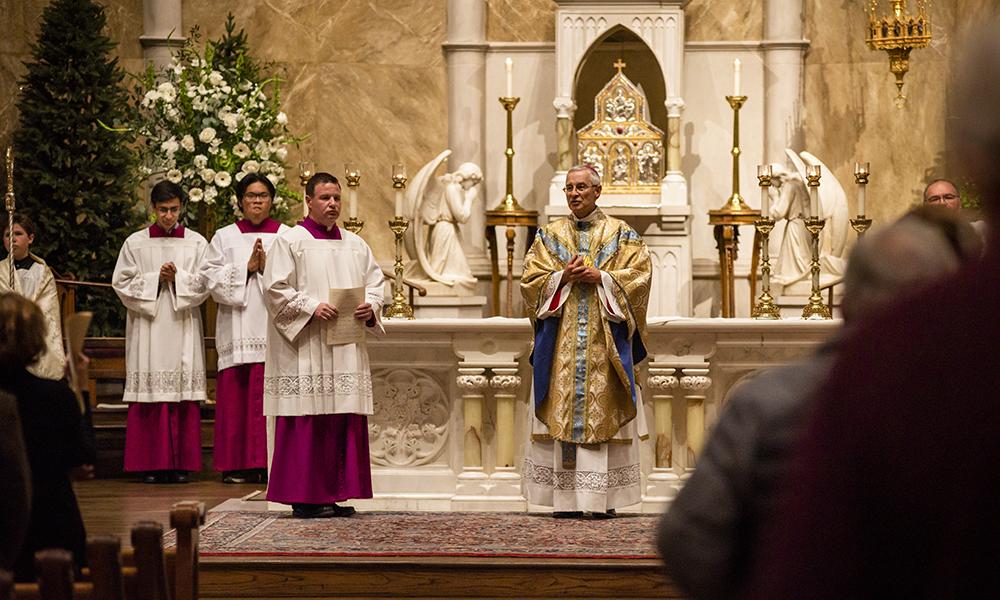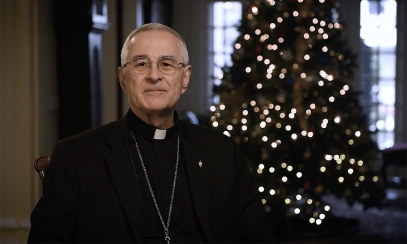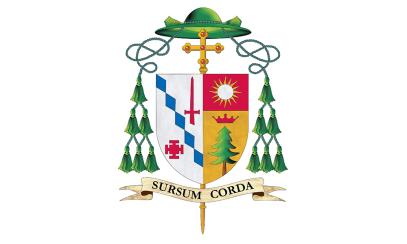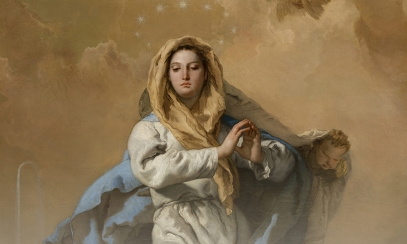
Bishop Raica Celebrates the Feast of the Immaculate Conception & Dedicates New Pipe Organ
My sisters and brothers, tonight, we solemnly bless the new pipe organ – the Anna Catharine Grace Memorial Pipe Organ - for our Cathedral inspired and constructed by the Noack Organ Company. The realization of this organ is due in large part to the inspiration and tenacity of Father Bryan Jerabek and Bruce Ludwick, our Cathedral organist and choirmaster. The more than 3,500 pipes, tuned one by one, took time. As you will hear, the various choruses of flutes, strings, reeds, and principals create a harmony that touches the human heart. Some pipes are as small and thin like a pencil. Others from the 16’ and 32’ rank are large enough to make the rafters shake. From soft to loud, and with different textures, an accomplished organist is a true maestro of an orchestra to evoke reflection, joy, sorrow, elation, and everything in between. It can lead a congregation in a robust hymn, a choir in a motet, or add a musical parenthesis (i.e., a prelude / a postlude to mark the tone of the celebration). From contemporary artists to the familiar strains of Bach, Cesar Franck, or Durufle whose Mass we are hearing tonight, it demonstrates the fact that our faith, too, is symphonic. We are all trying to play our own sound as is evidenced by an array of timbres. Together, we form a chorus that gives all praise, worship, and glory to God. Special thanks go to Nami Hamada (voicer/finisher), Didier Grassin (president of Noack), and Bertrand Cattiaux for help in voicing the reeds. The Cathedral pipe organ is an impressive instrument and will serve our Cathedral for many, many years.
On this day of the formal blessing of our pipe organ, it is fitting that we do so today on this Feast of the Immaculate Conception! In some ways we look at this magnificent feast as the way that God begins again. God played the right notes to restore harmony in our relationship with Him. God always seems to be picking up and starting over again, especially when we can’t seem to get it right. This time, He wanted to do something very particular. He wanted so much to love us by sending us Jesus. He had to figure out a way that He could convey the fact that you and I are the most important people ever the focus of the intensity of His love and affection. Afterall, He confirmed it in the very beginning of creation. After the creation of man He said, “And it was very good!”
In figuring out a means by which He could send His Son Jesus to us, He had to find a unique way through a special vessel. And the Church acknowledges that means: “He was born of Mary” whom He set aside for this purpose, as a woman who was given the most beautiful gift of all. She would be conceived in her mother, whom we come to know as St. Ann, already possessing the graces of the redemption without Original Sin that affects all the rest of us. She was conceived, as we believe, without sin. She lived without sin. Rather than dying, at the moment of her fulfillment of life on earth, our Lord took her to Heaven – the feast we commemorate as the Assumption of the Blessed Virgin Mary, the fruit of the fact that she was already redeemed by her Son.
Now, all that sounds nice. But for us what does all this mean? Here are just a few phrases from the Gospel of St. Luke and St. John that relate to the very mystery of redemption, the role of Mary. How do we reflect on them today?
- “God so loved the world, He sent His only begotten Son” (Jn 3:16), we read in St. John’s Gospel. He figured out a way that this event could happen, a way that would be worthy of the place where God could make that entry into the world. It would be through a woman, through a vessel or instrument who would be especially prepared for this task. In fact, the Scriptures also identify her as one who is already “full of grace” in the greeting from the Archangel Gabriel! (cf. Lk 1:28)
- “My being proclaims the greatness of the Lord,” (Lk 1:46) responds Mary to her visit with her cousin Elizabeth who acclaimed, “Blest are you among women and blest is the fruit of your womb!” (Lk 1:42) Her very self was that perfect instrument which cooperated totally and completely with God’s plan! She heard God’s Word, embodied God’s Word – the Word-made-flesh - and lived God’s Word! How beautiful is that!
- “I am the handmaid of the Lord, let it be done to me as you say!” (Lk 1:38) responds Mary to the angel Gabriel’s announcement. In these very words mercy is found because of the freedom of Mary to cooperate with God’s plan. Mary is therefore considered the new Eve. St. Irenaeus, who lived in the 2nd century, explained it in this beautiful way: “The knot of Eve’s disobedience was untied by Mary’s obedience: what the virgin Eve bound through her disbelief, Mary loosened with her faith.” (Against Heresies, 3, 22, 4: PG 7) As she cooperates with God’s plan, she unties the knots that kept humanity bound. We might call her the “un-tier or the un-doer of knots.” We need her to untie / undo a number of knots today.
Yes, we need mercy now more than ever. It is an embrace and caress to awaken in us the possibility of who we truly are – beloved ones, daughters and sons of God! It is a mercy filled with tenderness and affection for us.
So, on this day in which we recall the Immaculate Conception, we pause to marvel at the generous providence of God who provides us with another reason to live and love and extend His mercy because we have been loved so very much. As Mary graciously received mercy in her own life, so can we. May God bless you!
For Bishop Raica’s complete homily, click here.



